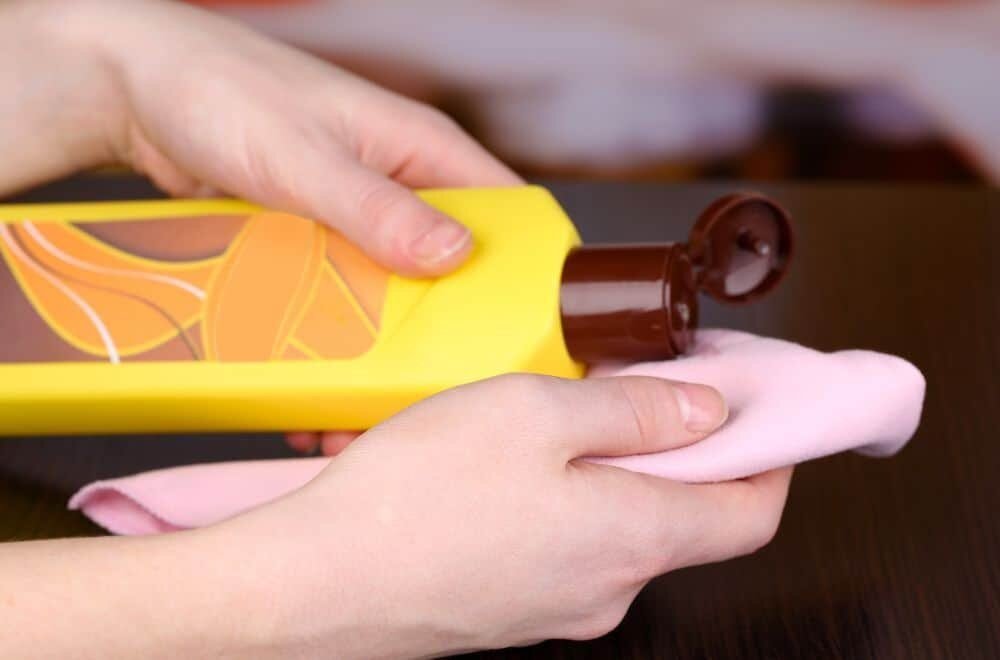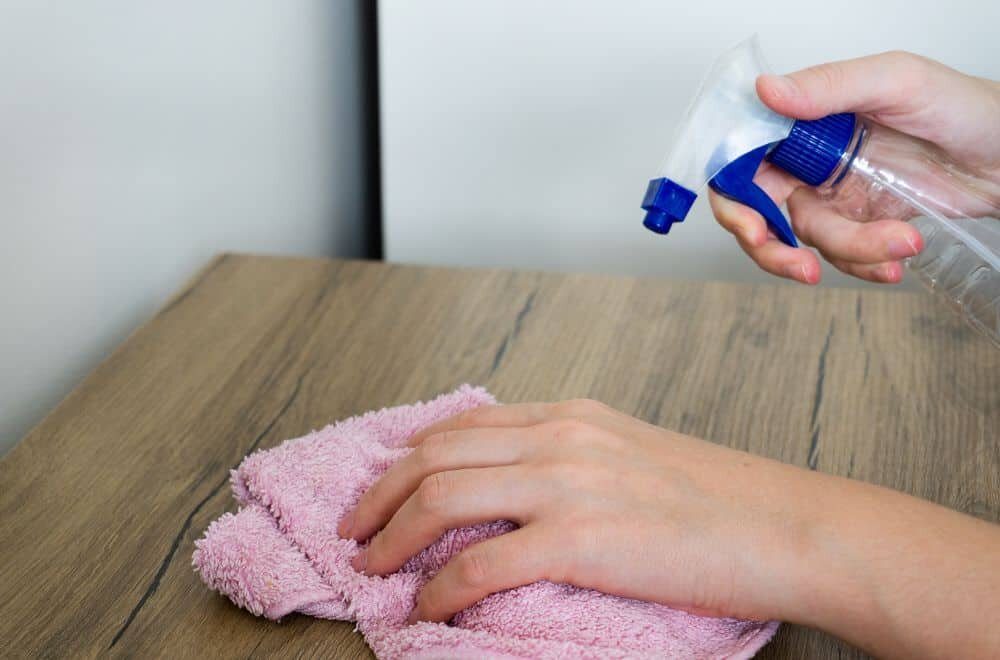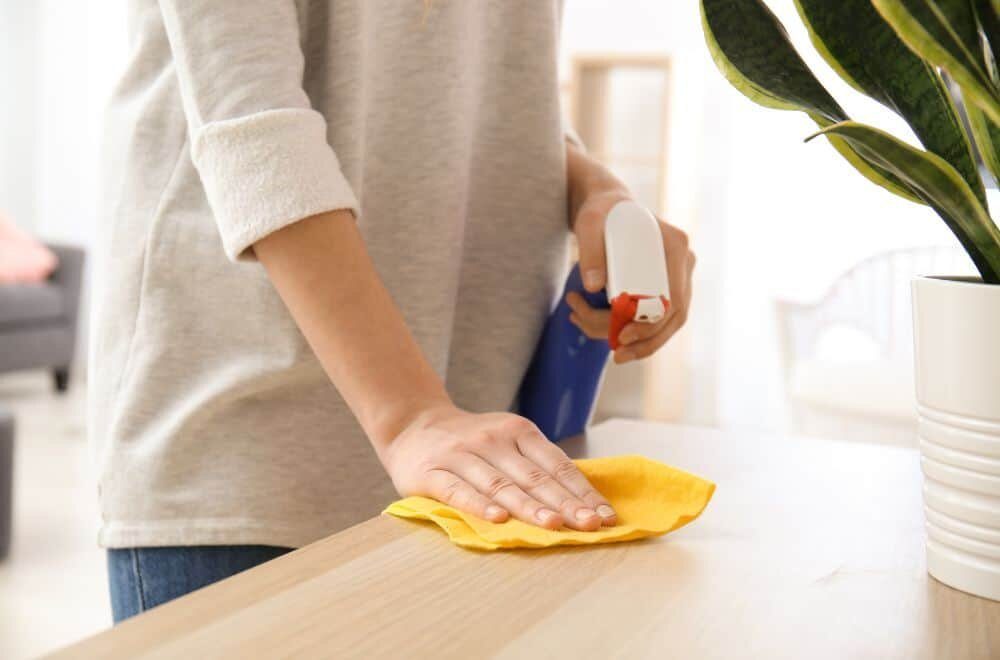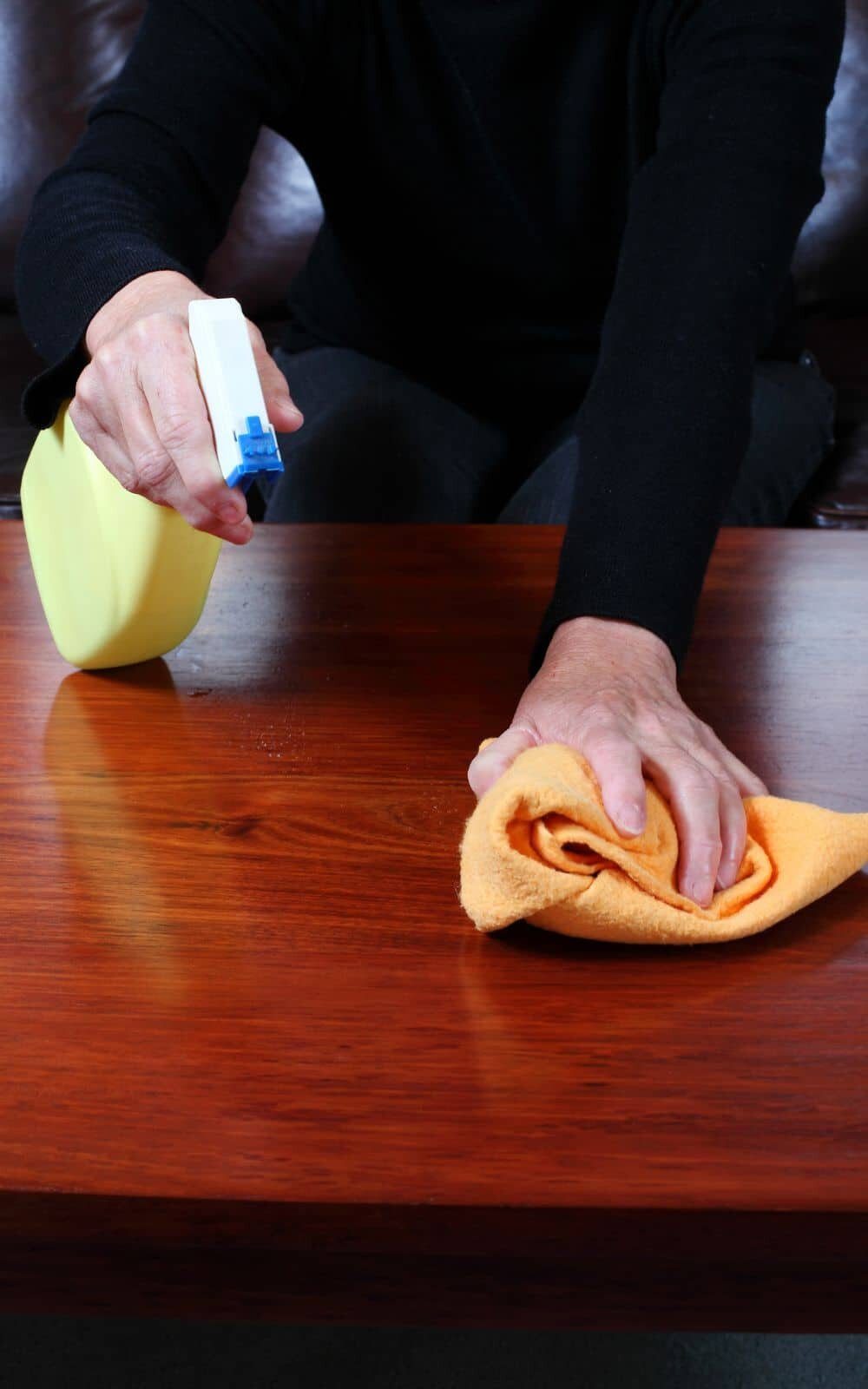Are you struggling to remove Sharpie marks from your wooden table? Whether it’s from a child’s art project or an accidental mishap, permanent marker stains can be frustrating to deal with. But don’t worry, there are several effective methods for removing Sharpie from wood that you can try at home.
One of the easiest and most common ways to remove Sharpie from a wooden table is to use rubbing alcohol or hand sanitizer. These products contain isopropyl alcohol, which is a powerful solvent that can break down the ink. Another option is to use nail polish remover or hairspray, which also contain solvents that can dissolve the ink. However, it’s important to test these products on an inconspicuous area of your table first to make sure they don’t damage the finish.
If you prefer a more natural solution, you can try using baking soda or toothpaste. These household items have abrasive properties that can help lift the ink off the surface of the wood. Alternatively, a magic eraser or dry-erase board cleaner can also be effective at removing Sharpie marks. With a little bit of patience and the right tools, you can easily get rid of those pesky permanent marker stains and restore your wooden table to its former glory.
Understanding the Nature of Sharpie Markers
When it comes to removing Sharpie marks from a wooden table, it is important to understand the nature of Sharpie markers. Sharpie markers are a popular brand of permanent markers that are known for their bright, bold colors and their ability to write on almost any surface. They are commonly used for labeling, drawing, and writing on various materials, including wood.
Sharpie markers contain a combination of pigments, solvents, and resins that make them permanent and waterproof. The ink in Sharpie markers is designed to be absorbed by the surface it is applied to, which makes it difficult to remove once it has dried. The ink can also penetrate the surface of the wood, making it even more challenging to remove.
It is also important to note that not all Sharpie markers are created equal. Some Sharpie markers contain more pigments and solvents than others, which can affect how difficult they are to remove. Additionally, some types of wood may be more porous than others, which can affect how well the ink is absorbed and how difficult it is to remove.
Overall, understanding the nature of Sharpie markers is an important first step in successfully removing Sharpie marks from a wooden table. By understanding how the ink works and how it interacts with the wood, you can choose the best method for removing the marks and avoid causing any damage to the wood surface.
Materials Needed
When it comes to removing Sharpie from a wooden table, you’ll need a few materials to get the job done. Here are the essential items you’ll need:
Cleaning Solutions
- Baking soda: This common household item is a natural abrasive that can help remove Sharpie stains from wood.
- Toothpaste: Toothpaste is another abrasive that can help remove Sharpie stains from wood.
- Hairspray: Hairspray contains alcohol, which can help dissolve Sharpie ink.
- Nail polish remover: Acetone-based nail polish remover can be effective at removing Sharpie stains from wood.
- Magic eraser: This cleaning tool is designed to remove stubborn stains and marks from a variety of surfaces, including wood.
Tools
- Soft cloth: You’ll need a soft cloth to apply the cleaning solution and wipe away the Sharpie stain.
- Cotton swabs or balls: These can be useful for applying the cleaning solution to small or hard-to-reach areas.
- Melamine foam eraser: This is another cleaning tool that can be effective at removing Sharpie stains from wood.
Before you begin, make sure you have all of these materials on hand to ensure a successful removal of the Sharpie stain.
Precautionary Measures
When trying to remove Sharpie from a wooden table, it is important to take some precautionary measures to avoid damaging the surface or harming yourself. Here are some tips to help you remove Sharpie from a wooden table safely:
1. Test the Method
Before applying any cleaning solution or method to the Sharpie stain, test it on a small, inconspicuous area of the wooden table first. This will help you determine if the method is safe to use on your table without causing any damage.
2. Wear Protective Gear
Some cleaning solutions or methods may contain harsh chemicals that can be harmful to your skin or eyes. It is recommended that you wear gloves and eye protection when applying these solutions to protect yourself.
3. Work in a Well-Ventilated Area
Some cleaning solutions or methods may produce fumes that can be harmful if inhaled. It is recommended that you work in a well-ventilated area or use a fan to circulate the air.
4. Use Gentle Techniques
When trying to remove Sharpie from a wooden table, it is important to use gentle techniques to avoid damaging the surface. Avoid using abrasive materials or scrubbing the stain vigorously, as this can scratch the surface of the table.
5. Clean Up Thoroughly
After removing the Sharpie stain, make sure to clean up any remaining cleaning solution or residue thoroughly. This will help prevent any damage or discoloration to the wooden table.
By following these precautionary measures, you can safely remove Sharpie from a wooden table without causing any damage or harm to yourself.
Step-by-Step Guide
If you have a wooden table that has been marked with Sharpie ink, don’t worry. With the right cleaning solution and a little bit of elbow grease, you can remove those stubborn marks and restore your table to its former glory. Follow these steps to get Sharpie off a wood table:
Testing the Cleaning Solution
Before you start cleaning, it’s important to test the cleaning solution on a small, inconspicuous area of the table to make sure it won’t damage the wood. Choose an area that’s hidden from view, such as the underside of the table or a corner that’s normally covered with a tablecloth. Apply a small amount of the cleaning solution to a cotton swab or cloth, and rub it gently on the test area. If the wood doesn’t show any signs of damage or discoloration, you’re good to go.
Applying the Cleaning Solution
Once you’ve tested the cleaning solution, it’s time to apply it to the marked area. There are several cleaning solutions you can use, including rubbing alcohol, nail polish remover, and hairspray. Choose the one that you have on hand or that you feel most comfortable using. Apply a small amount of the cleaning solution to a cotton swab or cloth, and rub it gently on the marked area. Be careful not to apply too much pressure or scrub too hard, as this can damage the wood. Instead, use a gentle, circular motion to lift the ink from the surface of the wood.
Wiping Off the Marker
After you’ve applied the cleaning solution, use a clean cloth or paper towel to wipe away the marker ink. Again, use a gentle, circular motion to avoid damaging the wood. If the ink is particularly stubborn, you may need to repeat the process a few times to fully remove it. Once the ink is gone, wipe the area with a damp cloth to remove any residue from the cleaning solution.
By following these simple steps, you can get Sharpie off a wood table and restore it to its original beauty. Just remember to test the cleaning solution first, be gentle when applying it, and wipe away the ink carefully. With a little bit of patience and perseverance, your table will look as good as new.
Alternative Methods
If the nail polish remover method doesn’t work for you or you don’t have it on hand, don’t worry. There are other ways to remove Sharpie from a wooden table. Here are some alternative methods to try:
Using Baking Soda
Baking soda is another common household item that can help remove Sharpie stains from wood. Here’s how to use it:
- Mix a small amount of baking soda with water to create a paste.
- Apply the paste to the stained area.
- Use a soft-bristled brush to gently scrub the area.
- Wipe away the paste with a damp cloth.
- Repeat as necessary until the stain is gone.
Using Toothpaste
Toothpaste is another mild abrasive that can help lift the ink off the wood. Here’s how to use it:
- Apply a small amount of toothpaste to the stained area.
- Use a soft-bristled brush to gently scrub the area.
- Wipe away the toothpaste with a damp cloth.
- Repeat as necessary until the stain is gone.
Using Magic Eraser
Magic Erasers are a great tool for removing all kinds of stains, including Sharpie. Here’s how to use them:
- Wet the Magic Eraser with water.
- Gently scrub the stained area with the Magic Eraser.
- Wipe away any residue with a damp cloth.
- Repeat as necessary until the stain is gone.
Remember, when using any of these methods, it’s important to test a small, inconspicuous area of the wood first to make sure it doesn’t cause any damage. Also, be patient and persistent – removing Sharpie stains from wood can take some time and effort.
Maintaining Your Wooden Table
Regular Cleaning
To keep your wooden table looking its best, it’s important to clean it regularly. Here are some tips to help you do that:
-
Use a soft, damp cloth to wipe down your table after each use. This will help remove any dust or dirt that may have accumulated on the surface.
-
Avoid using harsh chemicals or abrasive cleaners on your wooden table, as these can damage the finish.
-
If your table has a stubborn stain, try using a mixture of warm water and mild soap to clean it. Be sure to rinse the area thoroughly with clean water and dry it off completely.
-
For tough stains like Sharpie, use rubbing alcohol or nail polish remover. Apply a small amount to a cotton swab and gently rub the affected area until the stain disappears. Be sure to rinse the area thoroughly with clean water and dry it off completely.
Using Protective Coatings
Another way to maintain your wooden table is to use protective coatings. Here are some options to consider:
-
Wax: Applying wax to your table can help protect it from scratches and stains. Simply apply a thin layer of wax with a soft cloth and buff it in with a clean, dry cloth.
-
Varnish: Varnish is a clear, protective coating that can be applied to wooden surfaces. It helps to protect your table from scratches, stains, and UV damage. Be sure to follow the manufacturer’s instructions when applying varnish.
-
Oil: Applying oil to your wooden table can help keep it moisturized and prevent it from drying out. Be sure to choose an oil that is safe for use on wooden surfaces.
By following these tips, you can keep your wooden table looking beautiful for years to come.



